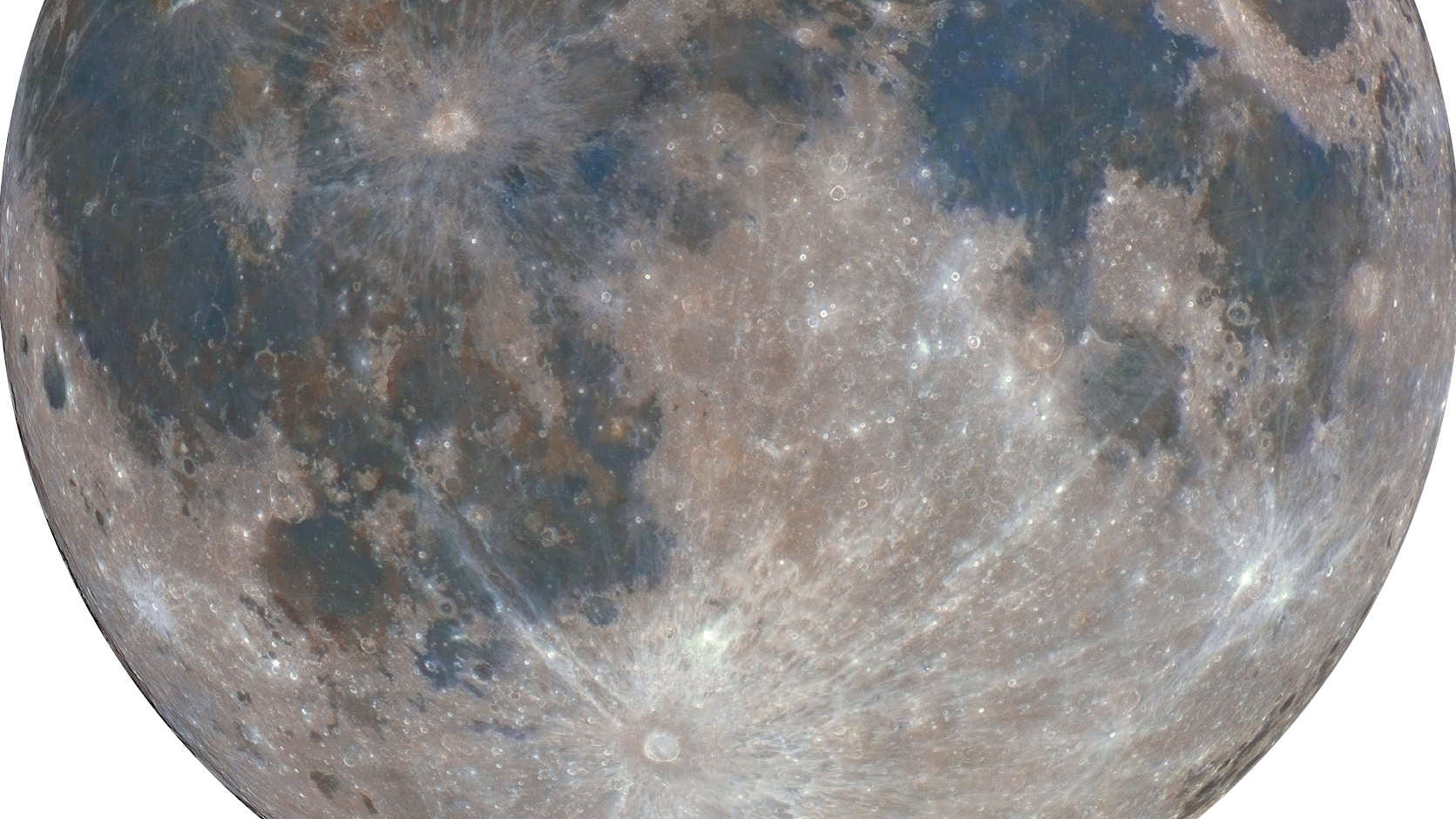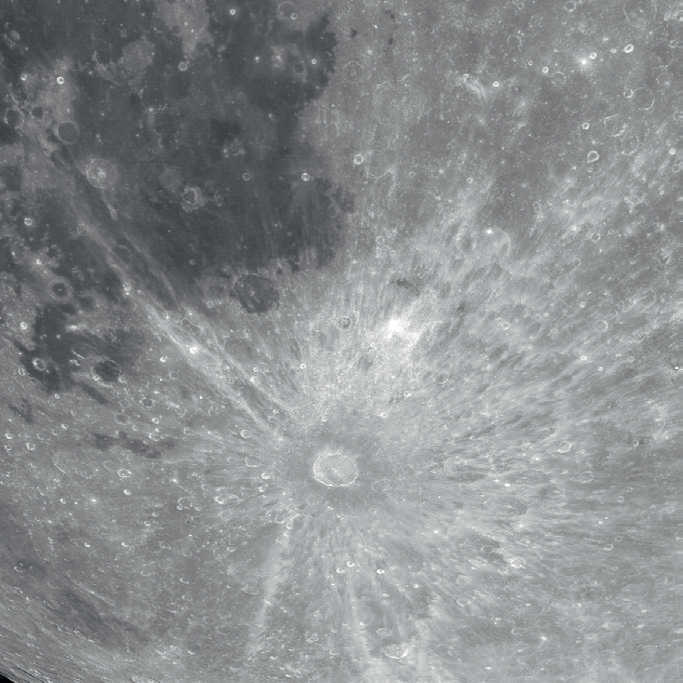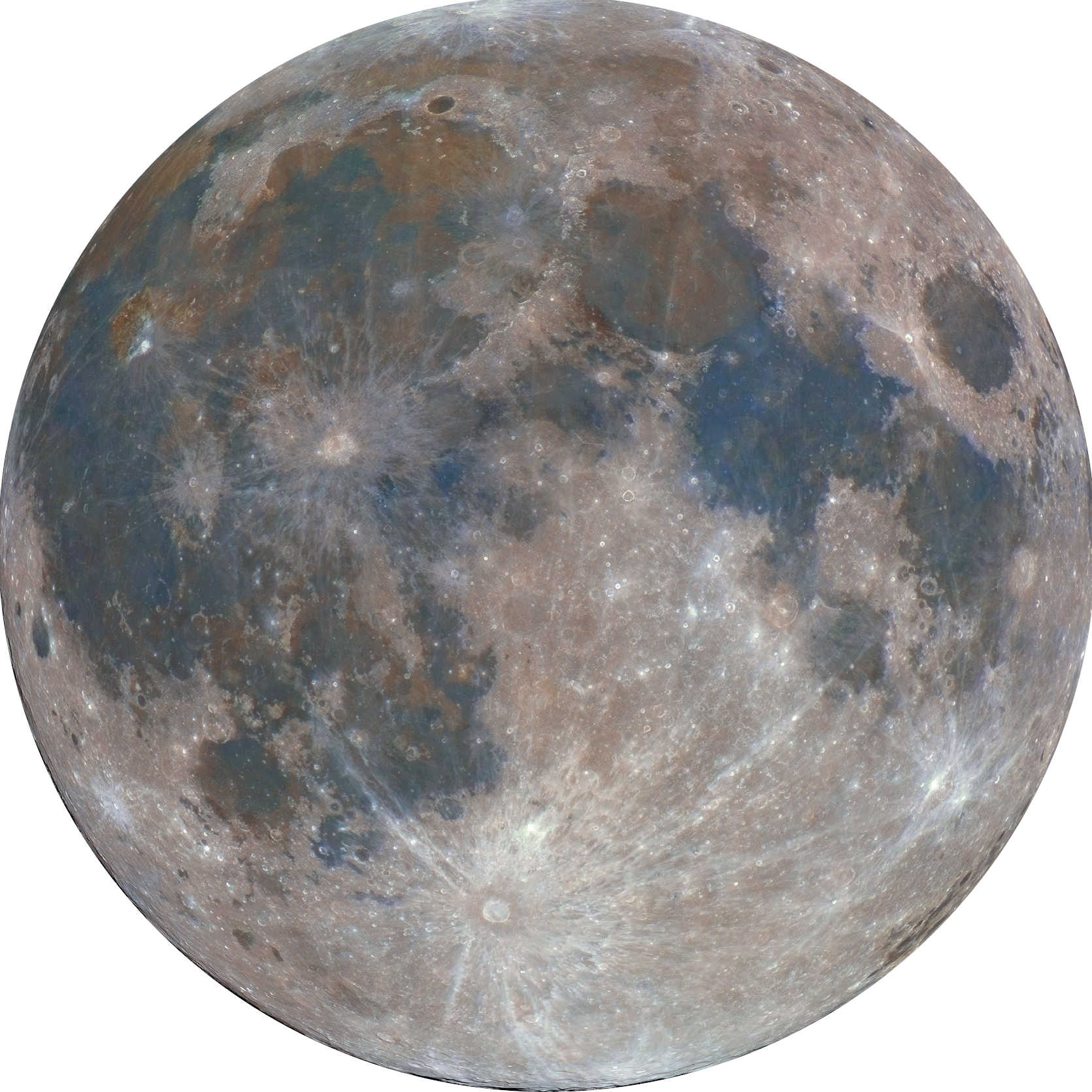Treats at Full Moon
The full Moon reveals ray systems – and binoculars are sufficient for the brightest and largest of these.
 Tycho is to be found in the south of the Moon, Reiner Gamma is close to the Moon’s western edge. Mario Weigand
Tycho is to be found in the south of the Moon, Reiner Gamma is close to the Moon’s western edge. Mario WeigandFull Moon is a dull time for most astronomers: deep sky observation possibilities are very limited due to the brightness of the Moon, and there are no shadows cast on the Moon itself when the Sun is high. But there’s no need to be gloomy: Full Moon is exactly the right time to take a closer look at a particular group of structures on the Moon's surface.
The largest ray systems
 There are hundreds of fine rays extending from 86 km wide crater Tycho.
Mario Weigand
There are hundreds of fine rays extending from 86 km wide crater Tycho.
Mario Weigand
Binoculars are all you need for a first look at the Moon's brightest and most extensive ray system. There are hundreds of fine rays extending from 86 km wide crater Tycho. Seven to eight individual rays clearly stand out. If you take a closer look, you can see that there are no prominent rays in the south-western sector. This is a clear indication that there was an oblique impact from which the ejecta was flung out in a specific direction. Likewise, not all rays appear to originate from Tycho’s centre, but appear to be slightly offset. Such an ejection pattern is created by impactors that strike the surface of the Moon at an angle of less than 45 degrees – in the case of Tycho it was a meteorite coming from the west with a probable diameter of eight to ten kilometres. According to current estimates, the impact took place only around 100 million years ago.
A swirl on the Moon
 Drawing: central section of Reiner Gamma at high magnification and calm air. L. Spix
Drawing: central section of Reiner Gamma at high magnification and calm air. L. SpixLunar swirls are very rare structures of the surface of the Moon. The near side of the Moon reveals just one clear example: Reiner Gamma in the Oceanus Procellarum (Ocean of Storms). The origin of the bright swirls is unexplained. Comet impacts, small meteorites, and electrostatic effects have all been discussed as possible causes. The only certainty is that Reiner Gamma is also a location with a stronger magnetic field. The central area of Reiner Gamma has an elongated section around 35 km wide, and is visible as a tadpole-shaped brightening on the dark surface of Oceanus Procellarum. Trailing swirls are visible in calm and clear air. The fine swirls curve around 200 km to the south and in a northerly direction up to a distance of around 235 km.
Best visibility at Full Moon

Author: Lambert Spix / Licence: Oculum-Verlag GmbH
